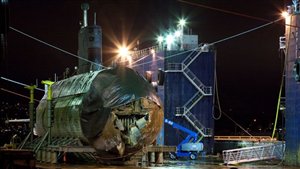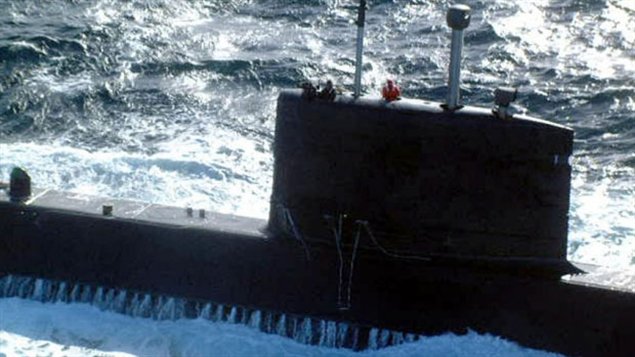Ten years and many millions of dollars later, one of Canada’s used submarines is about to return to duty.
In 1998, the federal government announced plans to buy four surplus diesel-electric submarines from Britain.
Hailed by the government as a bargain at the time at $750 million, the subs were quickly found to have problems requiring correction before they could be sailed to Canada. The boats have since spent much of their time in Canada either tied up, or under repair, with ballooning costs.

In October of 2004 HMCS Chicoutimi was on its first ocean voyage coming from Britain to Canada when a rogue wave washed over it off the coast of Ireland. Water entered an open hatch and shorted poorly insulated high-tension wires. The subsequent fire killed one sailor and injured eight others.
Chicoutimi remained tied up for years before entering drydock in 2009 to undergo repairs and upgrades. That cost was initially estimated to be about $15 million in 2005, but by 2006 the cost had increased to $20 million, and now internal documents suggest that the cost is closer to $125 million.
Following some water trials late last year, it is now ready to be returned to the navy for more extensive trials. The Navy says it will be restricted to shallow dives for the time being.
Of the four submarines, only HMCS Victoria is listed as fully operational, having successfully fired a live torpedo, following its approximately $200 million refit.
HMCS Windsor undocked in 2012 also following some $200 million in repairs and upgrades is currently listed as operational but is under dive restrictions and has not completed weapons certification.
HMCS Corner Brook is in drydock for repairs and upgrades after it smashed into the ocean floor off Vancouver Island on Canada’s west coast.







For reasons beyond our control, and for an undetermined period of time, our comment section is now closed. However, our social networks remain open to your contributions.